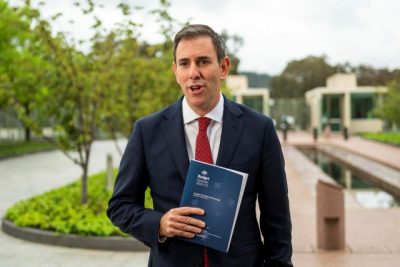Cost-of-living measures a key feature
The Australian Government unveiled its FY2024-25 budget this week, unveiling Canberra’s spending for the next year. The Government announced a $9.3 billion budget surplus for the previous

year, the first back-to-back budget surplus in almost 20 years. It then forecasts deficits of $28.3 billion and $42.8 billion in the following years due to declining commodity prices and a weaker job market.
The largest expenses in the FY2024-28 period will be GST ($499.8 billion), age pension ($322.5 billion), the National Disability Insurance Scheme ($262.6 billion), age care services ($190 billion) and Medicare ($168.5 billion). Inflation is forecasted to reach the Reserve Bank’s 2 to 3 percent target by FY2025.
The government included several cost-of-living measures in the budget. These include a $300 energy rebate for all households and $325 rebate for small businesses, a new method for indexing student loans that will wipe off $3 billion in debt, and almost $2 billion in rent assistance.
Critical industry subsidies take centre stage in Australian budget
Australia and Saudi Arabia chasing similar technologies
The Australian Government has committed $22.7 billion towards its Future Made in Australia initiative, in an attempt to build out capabilities in the production of critical technologies. From FY2027/28, the Government will introduce a $6.7 billion Hydrogen Production Tax Incentive set at $2/kg to make hydrogen more cost-competitive with other energy sources. There was also $470 million in loans, share purchases and grants for Quantum computing startup PsiQuantum. The Queensland Government will match the Federal Government’s commitment. The Federal Government will also spend $566 million over 10 years for Geoscience Australia to map the location of potential critical mineral deposits across the country, identify potential offshore CCS sites, as well as potential sites for offshore green hydrogen projects.
The significant commitments are demonstrative of Australia’s aim to gain a foothold in critical industries, mirroring Saudi Arabia’s ambitious push into alternative energy sources like hydrogen. Australia’s $6.7 billion Hydrogen Production Tax Incentive Echoes Saudi Arabia’s investments in renewable energy projects, both aiming to position themselves as leaders in the global energy transition. Moreover, just as Australia is fostering innovation in quantum computing with investments in start-ups like PsiQuantum, Saudi Arabia has its own initiatives to develop cutting-edge technologies, aligning with its Vision 2030 goals.
Saudi Arabia records small Q1 budget deficit while inflation remains steady
Rising housing prices one of the largest factors driving inflation
Saudi Arabia recorded a budget deficit of SAR12.4 billion (US$3.3 billion) in the first quarter of the year, with government expenditure rising by 8 percent to SAR305.82 billion. In April, the Kingdom’s inflation held steady at 1.6 percent annually for the second consecutive month, propelled by shifts in housing prices. The Consumer Price Index saw a marginal 0.3 percent uptick from March to April, largely influenced by a 0.4 percent rise in housing costs, including rents and prices. Personal goods and services rose by 1.2 percent, while food and beverages saw a 0.2 percent increase, and clothing and footwear climbed by 0.6 percent. Recreation and culture expenses also saw a 0.7 percent uptick. Notably, non-oil revenues experienced a significant annual increase of 9 percent, reaching SAR293.43 billion, driven by heightened taxes on goods and services, which surged by 11 percent to approximately SAR70 billion. Despite this revenue boost.
Saudi Arabia ups IT spending by 20 percent
Will help to foster a digitally-driven economy
In 2023, Saudi government spending on IT surged by 20 percent year-on-year, reaching SAR41.87 billion (US$11.16 billion). This substantial investment has played a pivotal role in advancing digital transformation across various facets of Saudi society. Notably, the health and social development sector received the largest share of government IT expenditure, amounting to SAR20.14 billion, representing 17 percent of the total expenditure.
The increased government spending on IT reflects Saudi Arabia’s strategic focus on fostering a conducive environment for investment and economic growth. The Kingdom aims to enhance its attractiveness to both domestic and foreign investors. The modernisation of IT systems is a key part of this as it improves operational efficiencies and promotes a digitally-driven economy.
END




